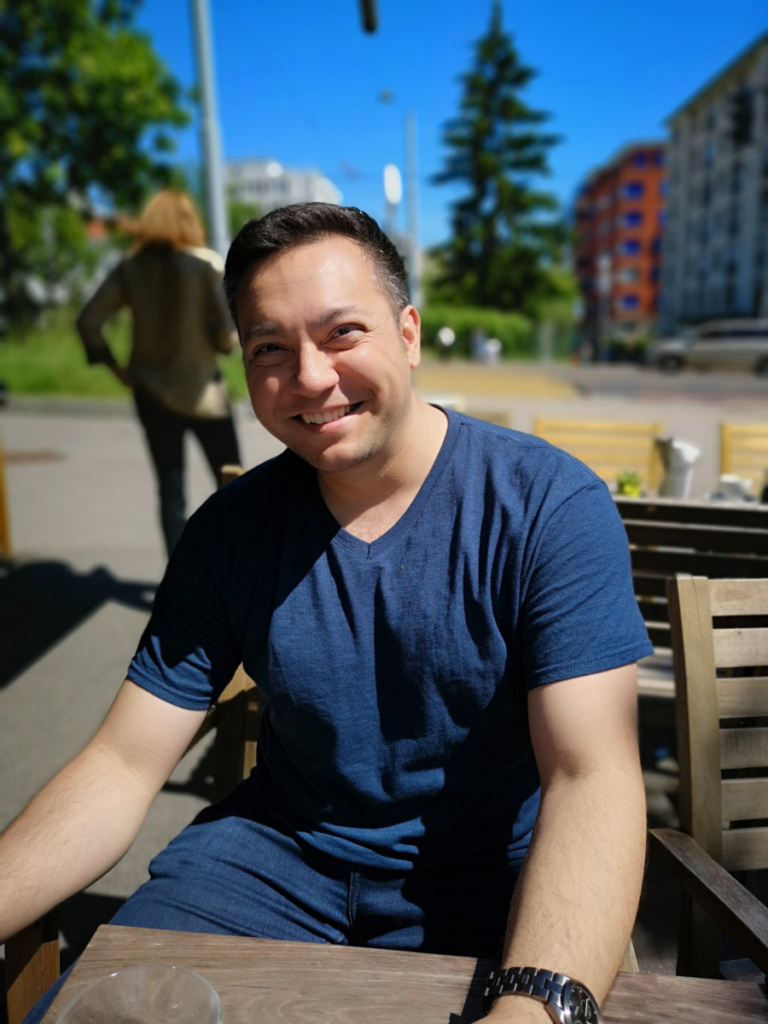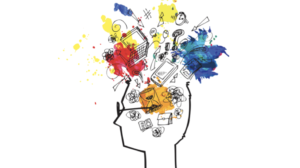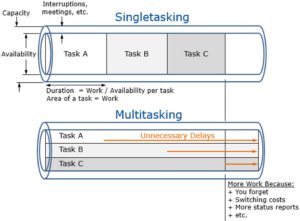WFH: New Challenges & New Opportunities
Category : PROspective
Let’s take a poll: What is it called when you perform tasks at home that are normally accomplished at your company’s office or the library?
a) Working from home (WFH)
b) Working remotely
c) Teleworking
d) Digital Nomading
e) Pajama Executive
In English, we have a few different ways to say it, but ultimately they all mean the same thing; and represent a practice that many of you are just now trying for the very first time as workplace standards of the last 100 years suddenly, maybe irreplaceably, get upended by a global infectious disease pandemic.
Working remotely means a lot of different things. While you have probably spent an hour at a coffee shop catching up on email, or taken a conference call from home once or twice when sick, it’s more likely that a permanently remote scenario is new to you. Personally, I’ve been fortunate to travel and work remotely in some capacity for several years, but have been fully remote for the last 11 months – now residing semi-permanently in Medellin, Colombia while continuing multiple jobs from afar.
During this time, I’ve either encountered, fallen victim to, or narrowly avoided many of the classic pitfalls of the Pajama Executive, and today I would like to share some suggestions to help you transition into your new situation. While it may seem disruptive at first, my opinion is that remote work – if designed well – can provide enormous opportunities for professional growth and increased productivity. My hope is that by the end of this article, you, like me, will find more upside in your newfound situation than downside.
Your Workspace
You’re going to be spending a lot of time here for the foreseeable future. In public health, a common approach to behavior change is to make good habits as easy as possible to accept and maintain. Designing your workspace involves some of the same principles: make your space as comfortable and easy to work in as possible.
- Get your technology in order: Identify a dedicated workspace (ideally not in your bedroom, if possible) and arrange your setup with the goal of returning to the same spot every day. The idea is to mimic the conditions at your actual desk in the office. Position your laptop to give you the most ergonomic functionality and appropriate angle and background for video conferences. Test out your call/video conference stability over your wifi network. If your wifi isn’t very stable, do you need to upgrade your internet service? Now is a good time to set up the appointment with your service provider. Strong reliable internet will improve your productivity and, by doing so, ultimately pay for itself. This is why organizations tend to invest a lot in their in-office connectivity. If you are not already required to by your school or employer, consider using a VPN to protect your internet traffic and test any existing connections you might need to access files on the internal servers (Click here for information on Emory’s VPN access).
- Routine: How do you normally start your day? Workout, shower, eat a meal (read: drink coffee), get dressed, etc. Repurpose your normal routine to the new context of remote studying or working, and stick to it. Obviously, its reasonable to make more use of your casual wardrobe while working remotely, but for some of us, overdoing it on the casual attire leads to an overly casual disposition – the Pajama Executive might be prone to falling asleep on the job. The best approach, I have found, is to strike a balance and work in clothes that I can feel at least moderately professional in, even if I’m at home.
- Food: Working or studying from home can present another insidious challenge – sticking to a healthy diet. At the office or at school, there are socially acceptable times to eat. To break this routine would be difficult, which makes it easy to maintain consistently when you’re in public. However, at home, the (dining room) table is turned – culinary discipline is now 100% in your hands. There are two easy ways to avoid over-snacking, or eating lunch at 10:30am. First, skip the snack foods at the store, and stock up on the healthy stuff. You can’t eat what you don’t buy. Discipline in the store creates discipline in the home. Second, if possible, build your primary workspace somewhere away from the kitchen, and stock it with the essentials you’ll need for the day. We pack our lunch when we go to the office, so why not do the same at home. Ultimately, this strategy works because the less you walk near or through the kitchen, the less likely you are to be tempted.
Design Your Day
Be deliberate about how you want your days to look. How much time can or should you really dedicate to work versus play. How can you design a situation that will maximize your productivity?
- Work hours vs. non-work hours: Working remotely can be tricky because your work notifications can go off at any time, even if your work day is over. Most of us now get work email directly on our phones, so this isn’t new. The difference now is that you will have to decide when it is appropriate to respond. Keeping steady, dedicated work hours (communicate them to your superior and your team) can help set the right expectations for you and everyone you work with. Experiment with your “on” allotment and break times, and commit to NOT logging on when you are not scheduled to. This will ultimately help you remain the most efficient when you’re on and the most relaxed when you’re not. The same goes for classwork and studying – make a schedule and stick to it, then maximize your relaxation time when the workday ends.
- Daily To-Do list: Distraction starts with not knowing where to start on your work. To-do lists are an excellent solution to this problem. However, one major mistake with to-do lists is forgetting to stop when you’ve finished your list. Sometimes you don’t want to stop the roll you’re on, but it’s better to stick to the list you made a priori because burnout can sneak up on you fast when there is no one else setting the agenda for you. It was the classic American author, Ernest Hemingway who said, “Stop when you’re going good.” He is describing a common existential fear, among authors especially, that if you are on a roll that it won’t last until tomorrow, or that if you don’t take advantage you’ll miss out on some crucial productivity that won’t last until the next day. I personally find this the hardest to do well when I am performing programming tasks. Either way, try not to get sucked into this notion. Hemingway’s approach is based on the idea that if you are in the middle of a productive session towards the end of your day, leaving that inspiration on the table gives you the opportunity to pick it right back up in the morning tomorrow. What inspired your initial productivity will probably inspire subsequent productivity, especially if you return to it with fresh eyes the next day.
- Single-tasking: Two weeks ago, ADAP Farah Dharamshi authored an outstanding analysis of multi-tasking and it’s shortfalls. This wisdom is especially relevant for the remote student or employee. Of particular importance, is the idea of single-tasking. Close the tabs on your browser that aren’t immediately necessary for the task at hand, and commit yourself to a single, attainable objective, over a shorter period of time. You will almost certainly notice an improvement in productivity once you start to practice a more focused approach to individual tasks.
A good employee is…
How would you finish this sentence?
… is productive.
… is a team player.
… answers emails promptly.
These are all correct answers, all of which are necessary, but probably not by themselves sufficient, to describe a “good” employee. So, let’s try to redefine what this means in the context of remote work. Ultimately, being a good employee doesn’t mean you’re never distracted, or you respond to every email immediately – it means you do your job well and help make the team feel like no one is really remote.
- Over-communicate: Being remote means we have to compensate a little for the reduction in face-to-face interaction. Be a little more detailed in your emails. Prioritize phone calls over emails, and video conferences over phone calls.
- Independence: For better or worse, you are probably now going to be asked to perform tasks with less explicit direction than you were used to getting when you worked in the office. This isn’t universally true, because some managers naturally expect more or less independence from their employees. However, this provides a huge opportunity to take on more responsibility for your tasks and remove roadblocks to your success through resourcefulness and determination. This is the kind of initiative every manager dreams of, and will help you become a more productive, low-maintenance employee at home or in an office in the future.
- Be Flexible: Working or studying at home will inevitably lead to more variability than you may be used to. Expect variability, and roll with it. Your work hours and your co-workers hours may not align perfectly. Everyone is transitioning now, so some people may face challenges that are different than yours. There is a learning curve for everyone, so you might as well embrace it!
WFH: A new normal for the 21st century
It’s hard to say what exactly the workforce of the post-COVID-19 era will look like. Remote work has been popular for the last 15-20 years among a group of backpackers and travelers who coined the term “digital nomad“. This isn’t necessarily what remote work has to look like, but it’s the very first blueprint we have to compare against. Ultimately, as COVID-19 pushes huge swaths of the economy into the home office, it’s very possible that we could be seeing the beginning of a more mainstream revolution in the relationship employees have with their employers and their workplace environment. If this is the case, then now is the time to embrace the new normal and master the WFH lifestyle and workstyle. Either way, this experience is likely to teach you a lot about yourself, your ability to self-manage, your discipline, and your needs as an employee – knowledge that will help you better understand your own strengths and weaknesses going forward.
Further Reading:
If you are interested in doing a deeper dive into WFH tips and tricks, take a look at some of the articles below:
- Forbes – The art of working remotely
- Vox – Working from anywhere: the good, the bad, and the lovely
- NPR – Tips for making working from home work for you
- Forbes – Building positive habits for full time remote work



Recent Comments